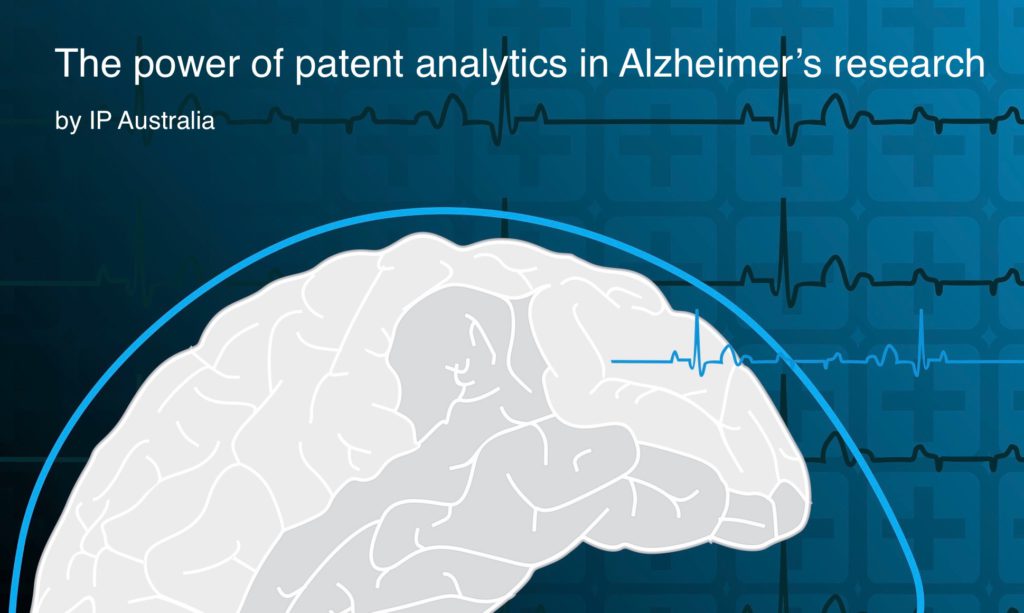Provided by The Patent Analytics Hub at IP Australia
A new report by the Patent Analytics Hub into Alzheimer’s disease has found that Australia is a target market for innovators seeking patent protection, with four out of the top-five applicants identified during the study filing applications in Australia.
With Alzheimer’s disease the most common form of dementia in the world, and the second leading cause of death here in Australia it is no wonder the research into the cure and prevention of this disease is a focus for researchers.
This patent analytics study set out to capture not only pharmaceutical treatments but also diagnosis and alternative medical treatments relating to Alzheimer’s disease using patent data since the year 2000.
Data shows there has been consistent filing of patents globally since 2000 to present, which signifies that there is still active research into the diagnosis and treatment of Alzheimer’s disease.
While there is activity globally and Australia a key market for international patent filings, the report found that Australia’s imports of this technology outweigh its exports. This means as a country we file less patents in Australia than our international counterparts and there is potential for Australian researchers to further grow and develop its research into this field.
Other findings were that applicants predominantly working in this area originate from the United States, with two multi-national companies Merck Sharp & Dohme Pty Ltd (MSD) and Roche dominating the patent landscape. It also highlighted the handful of applications originating from Australia came from Prana Biotechnology, University of Melbourne, Commonwealth Serum Laboratories otherwise known as CSL and University of Queensland.
It also found that collaborations are a common occurrence between the top applicants and other smaller entities. This suggests that the research into the treatment of Alzheimer’s disease is still very active and collaborations are a significant way to progress the research.
The report was produced by IP Australia’s Patent Analytics Hub which aims to help Australian innovators make the most of their intellectual property (IP).
The Patent Analytics Hub translates the world’s vast patent literature into useable information to help government agencies, publicly funded research organisations such as universities, medical research institutes and cooperative research centres with research, development, collaboration and commercialisation.
Patent data is powerful in determining the commercial relevance of the work that is undertaken in a particular field. This is because a patent is a right that is granted for any device, substance, method or process that is new, inventive, and useful. Patent rights are legally enforceable and give the owner exclusive rights to commercially exploit the invention for a limited period of time.
Through the analysis of data associated with patents, it is possible to measure aspects of inventive activity such as scope, intensity, collaboration and impact.
The origin of the Patent Analytics Hub date back to 2012, when the Advisory Council on Intellectual Property was tasked to identify how IP acts as an enabler or disabler of knowledge sharing, translational research and collaboration. Its recommendations included better access to patent analytics services for publicly funded research organisations to increase collaboration.
As a result of these recommendations, IP Australia, the government agency responsible for IP rights and legislation, established a range of services to help Australian innovators make the most of their IP. This included the Patent Analytics Hub, Source IP a digital marketplace to connect with potential research partners and the Australian IP Toolkit for Collaboration.
Each year, the Hub provides its services to the NFMRI pro-bono to develop a patent analytics report to help direct its research and commercialisation. The Hub works with the grant recipient and patent data to identify active areas of research, top applicants working in the area field, trends in filings and developments overtime.
The analysis of patents is just one means of assessing a research area of interest. It is this analysis that provides valuable insights for researchers working in this field, increasing understanding of the IP system and enabling researchers to make decisions which maximise the benefit of their innovation.
The full Patent Analytics Report: Alzheimer’s Disease is available on the IP Australia website.
For more information on the benefits of patent analytics, the Hub and its research, visit the IP Australia website or get in touch with the team at
Join the conversation at NFMRI’s third annual conference, “Philanthropy: Creating Impact and Dancing with Elephants”. The conference will take place on the 21st and 22nd of November 2017 at the Australian National Maritime Museum in Sydney.


